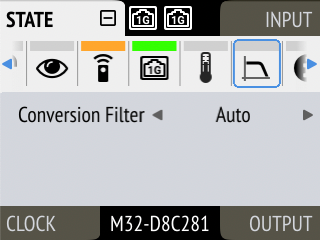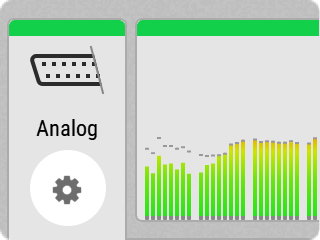Anti-Aliasing Filter
Anti-aliasing filters are low-pass filters that attenuate frequencies near the Nyquist frequency (half the sampling rate) to prevent aliasing artifacts during digital conversion. A steeper (“sharp”) filter maintains a linear frequency response up to the cutoff frequency but introduces increased ringing artifacts in the impulse response due to its abrupt transition. In contrast, a “slow” filter with a gentler slope may cause slight attenuation of high frequencies (treble), which can be audible at standard sampling rates, but provides a near-perfect impulse response with minimal ringing.
By default, the M-32 AD Pro II-D employs a sharp filter with short delay at standard sampling rates (44.1 kHz and 48 kHz) and a slow filter with short delay at higher sampling rates (88.2 kHz, 96 kHz, and above). However, the filter settings can be adjusted globally This flexibility is beneficial when maintaining a linear frequency response in the ultrasonic range is important for the given application (ie. measurements).
-
Slow
-
Sharp
-
Short-Delay Slow (default for SR ≤ 48 kHz)
-
Short-Delay Sharp (default for SR ≥ 88.2 kHz)
The Short-Delay options are IIR filters that reduce the overall delay of the conversion to a few samples, while the other two filters are FIR filters offer phase-linearity across the entire frequency range.
Changing the Aliasing Filter
The aliasing filter is stored within the current preset and is recalled when loading a preset. By default, it is set to Auto, which sets an anti-aliasing filter with sharp roll-off for single speed and with slow roll-off for double and quad speed.
-
Open the STATE section (see: Use of the Display and Encoder)
-
Use the encoder to open the filter tab:

-
Select the preferred aliasing filter.
| The aliasing filter affects both input and output conversion filters. It is not possible to control them separately. |
| Changing the filter might cause a brief noise on the analog channels. |

